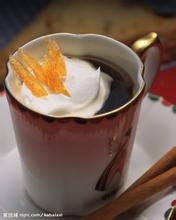Round taste of Tanzania Kilimanjaro coffee flavor taste manor characteristics of boutique coffee
The types of rainfall can be divided into bimodal distribution and unimodal distribution. The areas with double bee rainfall include the provinces around the Lake Victoria basin, the northeast highlands, the coastal and inland northeastern. The bimodal rainfall area is characterized by two rainy seasons. The short rainy season occurs from September to December. The total rainfall can reach 200-500 mm. The long rainy season occurs from March to May, and the rainfall reaches 300-600 mm. The areas outside the double-bee rainfall area are all single-bee rainfall areas, with rainfall of 500-1000 mm from November to April. Tanzania is rich in mineral resources. As of 2014, the main minerals identified include gold, diamond, iron, nickel, phosphate, coal and various gemstones, ranking fifth in Africa in total. Tanzania also has huge natural gas reserves. According to official data released by Tanzania, Tanzania has proven natural gas reserves of 44 trillion cubic feet, and the total reserves are expected to reach at least 200 trillion cubic feet.
It can be said that the pure Tanzanian coffee is "the most African coffee". Tanzania AA is the highest grade of beans, its grains are full, pure flavor, rich and refreshing, all aspects of quality are good. Usually it is mildly acidic and evenly stimulates the taste buds in the middle and sides of the back of the tongue, feeling a bit like the sour taste of tomato or soda. After moderate or more moderate baking, it has a strong aroma, then grind it into a fine powder, soak it in a pot of boiling water, invite friends to sit around and taste it, and suddenly feel fragrant and full of tongue. its quality is much better than the instant coffee we often drink. Tanzanian coffee has long been loved by Europeans and has joined the ranks of famous products. Europeans give Tanzanian coffee the nickname "coffee gentleman", and Chinese coffee connoisseurs call it the "coffee swordsman" with the mocha of the "King of Coffee" and the "Lady of Coffee".
Coffee is like the simple, frank and enthusiastic national character of Tanzania. Its refreshing acidity and medium mellowness complement sweet citrus and floral aromas. You can experience that different ethnic groups produce different coffee flavors, while the same land breeds coffee trees and Tanzanian coffee at the same time, which has long been loved by Europeans and joined the ranks of famous products. Europeans give Tanzanian coffee the nickname "coffee gentleman", and Chinese coffee connoisseurs call it the "coffee swordsman" with the mocha of the "King of Coffee" and the "Lady of Coffee".
Mount Kilimanjaro in Tanzania is 5895 meters above sea level and connected to Mount Meru. It is the main production base of Kilimanjaro coffee. Mount Kilimanjaro is the highest peak on the African continent and the only snowy peak on the earth located on the equatorial line. It is "the roof of Africa" and "Snow White on the equator". The rich volcanic ash gives the coffee here a strong texture and soft acidity, with the characteristics of typical African coffee beans. Kilimanjaro AA is the highest grade of beans with high quality in all aspects. Medium or more moderate after baking has a strong aroma. Suitable for making a single product or iced coffee, usually its acidity is relatively mild, after the entrance, it evenly stimulates the taste buds in the middle and both sides of the back of the tongue, feeling a bit like the sour taste of tomato or soda. After moderate or more moderate baking, it has a strong aroma, then grind it into a fine powder, soak it in a pot of boiling water, and invite friends to sit around and taste it.
Coffee is like the simple, frank and enthusiastic national character of Tanzania. You can see that different ethnic groups produce different flavors of coffee, while the same land breeds coffee trees and people. Most Tanzanian beans grow in Mr. Kilimanjaro and Mt, near the northern Kenyan border. The coffee producing areas around Meru, often referred to as "Clemangaro", are occasionally named after the distribution center Moshi or Arusha. In addition, on the southern side of the border, a little washed Arabica beans are produced, named after the nearby big city Mbeya or the distribution center Pare. The way of grading is similar to that of Kenya, distinguishing sizes by the English alphabet. Most Tanzanian beans have typical African bean characteristics. The better Clemencaro, similar to ordinary Kenya, has a strong texture, is usually milder acidic than Kenya, and evenly stimulates the taste buds in the middle and sides of the back of the tongue. It tastes a bit like tomato or soda. As for southern beans, they are similar to secondary water-washed mochas, with soft and ingratiating weak acidity, round taste, and medium texture. Beans from neighboring Malawi (Malawi) also have the same quality as Tanzania beans.

Important Notice :
前街咖啡 FrontStreet Coffee has moved to new addredd:
FrontStreet Coffee Address: 315,Donghua East Road,GuangZhou
Tel:020 38364473
- Prev

Introduction to the characteristics of high-quality coffee beans with elegant aroma in Guatemalan coffee producing areas
Coffee was really introduced into Guatemala in 1750 by Father Jesuit, and the coffee industry was developed by German colonists at the end of the 19th century. Today, most of the coffee industry's production takes place in the south of the country. There are seven major coffee producing areas in Guatemala, and the flavor of the coffee produced in each area is different, but to sum up, the coffee in Guatemala is all
- Next

Santo Domingo, Dominican Republic Coffee Varieties Producing Areas Flavors Taste Characteristics Boutique Coffee Introduction
In 1677, about 4,000 French lived in eleven villages in the western part of the island. In 1697, France and Spain ceded the western part of the island to France under the Treaty of Leswick of the Great Alliance War, officially recognizing French sovereignty over Haiti in the west of the Spanish island, and calling the eastern part of the Spanish island Santo Domingo. France on Hispaniola continues to develop an agricultural economy
Related
- Detailed explanation of Jadeite planting Land in Panamanian Jadeite Manor introduction to the grading system of Jadeite competitive bidding, Red bid, Green bid and Rose Summer
- Story of Coffee planting in Brenka region of Costa Rica Stonehenge Manor anaerobic heavy honey treatment of flavor mouth
- What's on the barrel of Blue Mountain Coffee beans?
- Can American coffee also pull flowers? How to use hot American style to pull out a good-looking pattern?
- Can you make a cold extract with coffee beans? What is the right proportion for cold-extracted coffee formula?
- Indonesian PWN Gold Mandrine Coffee Origin Features Flavor How to Chong? Mandolin coffee is American.
- A brief introduction to the flavor characteristics of Brazilian yellow bourbon coffee beans
- What is the effect of different water quality on the flavor of cold-extracted coffee? What kind of water is best for brewing coffee?
- Why do you think of Rose Summer whenever you mention Panamanian coffee?
- Introduction to the characteristics of authentic blue mountain coffee bean producing areas? What is the CIB Coffee Authority in Jamaica?

